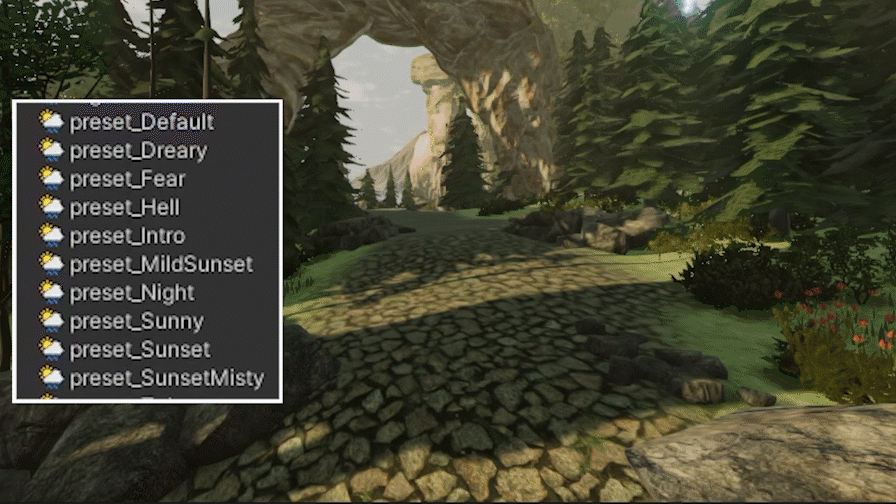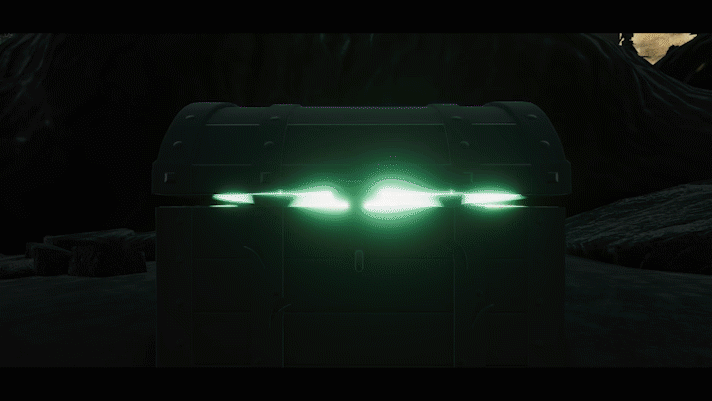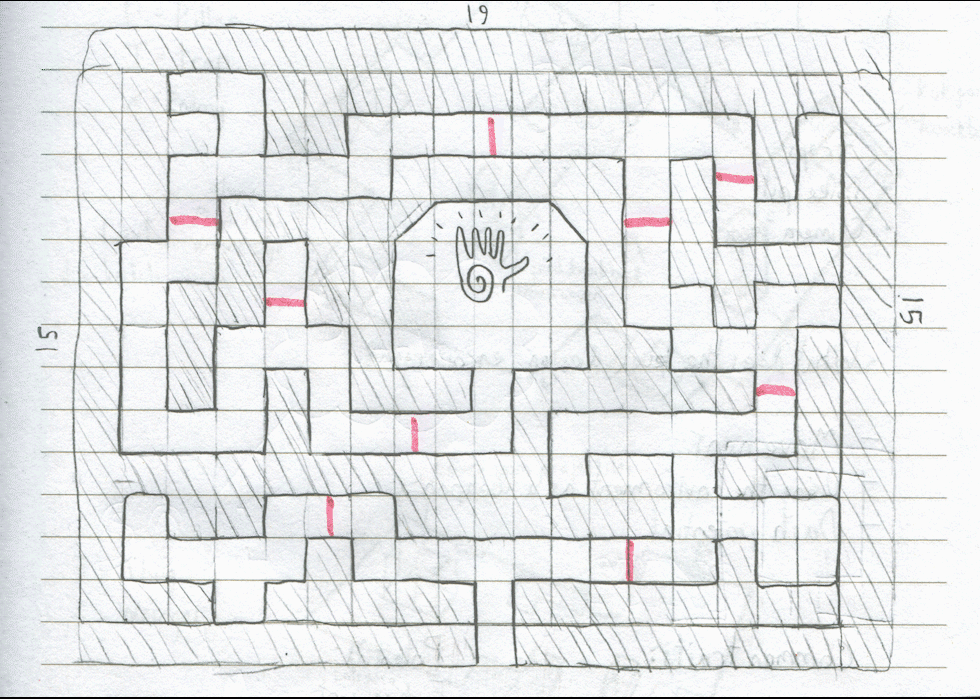Ardentide Island
Solo Project | Created in 5 months
Unity | C# | ML.NET | OpenCV | DlibDotNet
-
Created for my Honours Project and Dissertation: "Affective Game Adaptation: Exploring Emotion Recognition for Immersive Game Experiences"
-
A puzzle/exploration game that uses facial expression recognition technology to dynamically change the environment and gameplay based on the player's emotion.
-
Features include a dynamic weather system, adaptive wildlife and puzzles you can solve using your face!
-
A very rewarding experience that challenged my design skills whilst giving me full creative freedom and choice
-
Received an A+ for both the project itself and the dissertation
Level and System Design
Level Design
I wanted the game to be semi-linear, allowing the player to explore the island via three separate paths, connected by a central area that requires three "keys" to complete the game.
I wanted each path to lead to different biomes housing puzzles:
- A mystical fir forest surrounded by canyon-like rock formations
- An arid, rocky hill with a mysterious shrine at the peak
- A ruined overgrown labyrinth surrounded by woods.
After I defined the base concept and flow of the level, I began to plan out paths that lead to each puzzle. The paths twist and turn to give the player a sense of discovery as they must turn corners to view what's ahead of them. I then defined bounds for these paths that will later be populated with water, rock structures or thick trees.
I started creating an environment around the paths, starting in the fir forest area, and placed a static camera to capture a scene to serve as the foundation for the rest of the area. I began to place down trees, rocks and more natural assets from the Unity Asset Store to define this area. Once I was happy with how the scene looked, I began to "spread" these visuals throughout the area.
I created invisible walls using ProBuilder so keep the player within the bounds of the paths - this limits the player's freedom to explore the world, but meant that I didn't need to deal with tree or rock collisions, and the experience is streamlined for shorter participant test durations.









Adaptive Weather
The game is based around "Affective Adaptation" - the idea that elements of a game dynamically change to reflect the player's exhibited emotion.
Within art, literature and media, weather is commonly used to represent emotion. It is closely linked with mood and can stimulate thoughts and feelings that are associated with the weather's atmosphere, sunlight and rainfall. I decided to create a dynamic weather system that attempts to recreate this mood stimulation.
The system allows for:
- Light and Heavy rainfall
- Volumetric Fog
- Variable cloud density and colour
- Different times of day
- Dynamic Bird Flock behaviour
These multiples variables and possibilities made creating the weather system a difficult task. To streamline my design and experimentation process, I created a Custom Inspector in Unity to experiment with these values and find weather types suitable for the game (I also had some fun with it and created a "hell" preset with blood rain). The system works based on these presets, with each one being assigned to a certain emotion (e.g. Joy = sunny, Sadness = rain, etc).


Cinematics
Using Unity's animation system, event triggers and custom scripts, I created a cinematics system that allowed me to make cutscenes throughout the game. These cutscenes helped pace the game and introduce puzzles, as well as setting the scene in general. The style and cinematography for these cinematics were heavily inspired by the Legend of Zelda series.
Due to the immersive nature of the game, a better implementation of cutscenes would have been viewed in the First-Person, with all of the events happening from the player's viewpoint - however, successfully implementing this would have taken too much time and focus, and to stay on track for the deadline I decided to follow the detached, cinematic cutscene style.
I found royalty-free music and sound effects online which I used for the game and implemented using Wwise. I always believe that the introduction of audio is where a game truly comes to life, and in this case it was no different.

Puzzles


The Labyrinth
I wanted one of my puzzles to allow the player to interact with objects whilst exploring an area - the other two puzzles involve standing still and solving puzzles in front of them. I decided a nice way of doing this would be to create a labyrinth filled with gates that require the player to express an emotion.
I made rough designs for a maze on paper, and once I was happy with the layout I drew it with accurate measurements on a grid. I plotted the placements of the gate, and proceeded to move to Unity to create the structure in ProBuilder.
The "Affective Gate" mechanic is the main element of this puzzle. The player must make a facial expression to open gates marked with the corresponding symbol for that expression. I created a simple animation and trigger system which I hooked up to the Affective Adaptation code - if the player was standing in front of a gate and pulled the correct facial expression, the gate would open. This proved to be a very interesting and fun mechanic, but could leave players frustrated if weren't managing to pull a certain facial expression.
The Mood Receptors
The three puzzles revolve around the concept of the Mind, Body and Soul. For the Mind puzzle I wanted it to revolve around the idea of Positivity and Negativity relating to the mind, and the player has to create a "balance" between these states.
I came up with the concept of a Conveyance Cube - similar in size and function to the Discouragement Redirection Cube from Portal 2 (2011). The player holds this cube and fires a laser beam (or "conveys positivity/negativity") at objects in front of them. I called these objects "Mood Receptors".
To visually express positivity and negativity, I took inspiration from the character Moira from Overwatch (2016) - positivity uses the yellows and whites, and negativity uses purples and blacks. As you "convey" to the Mood Receptors, they change between these colours. Particles around the receptors change speed and radius depending on how "balanced" the state of the receptors are between positivity and negativity.
When a Mood Receptor turns white, it's balanced between positivity and negativity - the player must "balance" all of the 4 Mood Receptors to complete the puzzle. Quite a few play-testers remarked that this puzzle was confusing, however this puzzle was rated as participants' favourites more than the other puzzles.







The Mirror
The Mirror puzzle is the simplest puzzle in the game - The player is given text prompts to express 3 emotions to complete it.
I decided to keep it simple as it lies at the end of the route players are most likely to take. Players read things from left to right, so the left pathway is often the most likely path we'll take. This helps familiarise players with expressing emotions in the context of puzzles within the game.